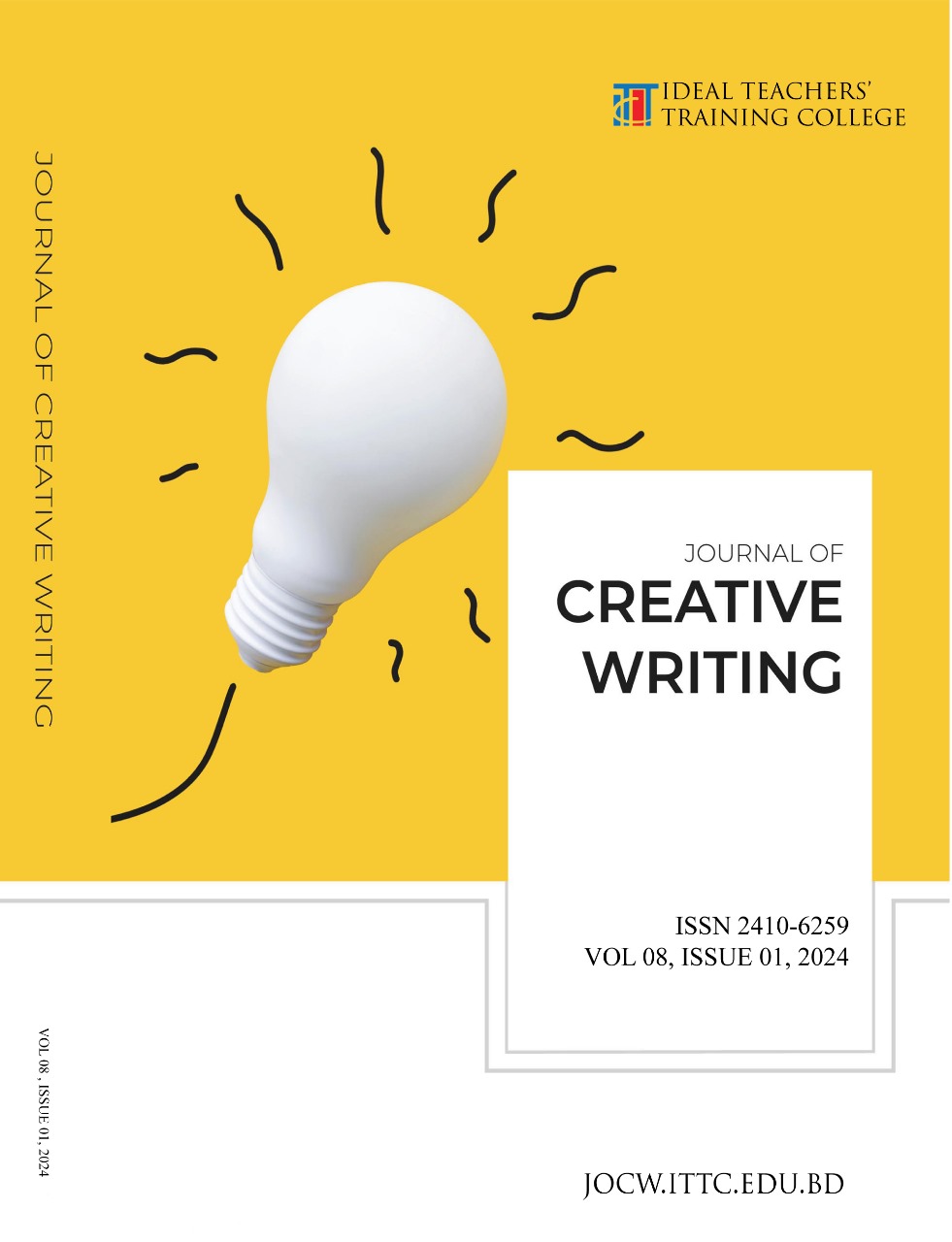Keywords
primary education
disaster resilience
health interventions
post-flood recovery
collaborative response
child-specific health programs
community support
teacher adaptability
disaster preparedness
How to Cite
Abstract
This report examines the responses of primary schools in Lakshmipur Sadar to the 2024 flash flooding event and its implications on educational access to hundreds of children. In this research paper based on qualitative evidence obtained through semi-structured interviews with teachers, Focus Group Discussions with parents, Key Informant Interviews with health and education sectors including health facility staff and education administrators, the focus was on the health and education sectors’ response. The results pinpoint health-related problems experienced after the flood, many international and national actors working together, schools acting as a dual-purpose facility and the issue of restoring education. It emphasizes the need for effective interventions focused on children’s health care and disaster management plans to prevent disruption of educational activities and health risks.
References
1. Chatzipanagiotou, P., & Katsarou, E. (2023). Crisis management, school leadership in disruptive times and the recovery of schools in the post COVID-19 era: A systematic literature review. Education Sciences, 13(2), 118. https://doi.org/10.3390/educsci13020118
2. Department of Disaster Management (DDM), & Ministry of Disaster Management and Relief (MoDMR). (2024). Flood situation report: Lakshmipur.
3. District Primary Education Office. (2024). Flood impact on primary schools in Lakshmipur.
4. Habiba, U., Jui, F. T. Z., & Meem, T. M. (2021). Disaster and education: Impact of flood on school-going children at Keshabpur Upazilla in Bangladesh. Journal of Disaster and Emergency Research.
5. Beltman, S., Mansfield, C., & Price, A. (2011). Teacher resilience: A framework for supporting and developing teachers in challenging times. Teaching and Teacher Education, 27(3), 621-629. https://doi.org/10.1016/j.tate.2010.09.001
6. Herman, K. C., Sebastian, J., Reinke, W. M., & Huang, F. L. (2021). Individual and school predictors of teacher stress, coping, and wellness during the COVID-19 pandemic. School Psychology, 36(6), 483-493. https://doi.org/10.1037/spq0000456
7. Roeser, R. W., Schonert-Reichl, K. A., & Jha, A. (2013). Mindfulness training and teachers' social and emotional competence: Effects of the CARE for Teachers Program. Journal of Educational Psychology, 105(3), 1010-1025. https://doi.org/10.1037/a0032093
8. Skaalvik, E. M., & Skaalvik, S. (2015). Teacher self-efficacy and teacher burnout: A study of relations. Teaching and Teacher Education, 44, 258-266. https://doi.org/10.1016/j.tate.2014.08.004
9. Hoque, M., Iqbal, K., & Roy, P. K. (2021). Impact of floods on education outcomes: Evidence from Bangladesh using satellite and school census data. Annual BIDS Conference on Development.
10. Kabir, S. (2012). Study of geo-climatic vulnerability and its response in the settlement pattern in coastal areas of Bangladesh.
11. Masese, A., Opiyo, R., Okayo, J., et al. (2012). Impact of floods on attainment of education for all (EFA) and vision 2030 in Nyando Basin, Kisumu County. International Journal of Disaster Management and Risk Reduction, 4(2), 19-31.
12. Ministry of Women and Children Affairs (MoWCA). (2010). Children and disaster risk reduction in the Asia Pacific: Background paper by Bangladesh. High-Level Meeting on International Cooperation for Child Rights (ICCR) in the Asia Pacific Region, Beijing.
13. Ronen, T. (2021). The role of coping skills for developing resilience among children and adolescents. In The Palgrave Handbook of Positive Education (pp. 345-368). Springer. https://doi.org/10.1007/978-3-030-64537-3_14
14. The Daily Star. (2024). Floods, education, and uncertainty: The impact of climate change on students in Bangladesh.
15. UNICEF. (2022). Millions of children in flood-affected Bangladesh in need of food, clean water, and protection.
16. World Bank. (2005). Natural disaster hotspots: A global risk analysis. Disaster Risk Management Series No. 5. Washington, DC: World Bank.

This work is licensed under a Creative Commons Attribution 4.0 International License.
Copyright (c) 2024 Sabera Hamid Khondokar, Khan Md. Hasanuzzaman
Downloads
Similar Articles
- Arlini Binti Alias, Classical Thoughts on Language: A Review of the Greek and Roman Linguistics , Journal Of Creative Writing (ISSN-2410-6259): Vol. 6 No. 1 (2022): Journal Of Creative Writing
- Foysal Habib, MD Imran Ali, Md. Jahangir Alam, Hridoy Mahmud, Hafizul Islam, Integrating E-Learning Into English Teaching In Semi- Urban High Schools And Colleges In Bangladesh , Journal Of Creative Writing (ISSN-2410-6259): Vol. 9 No. 3 (2025)
- Dr. Md. Sazidul Haque, International Conference on Literature, History, Culture 20-21 December 2019 Organized by Faculty of Arts, University of Rajshahi, Bangladesh , Journal Of Creative Writing (ISSN-2410-6259): Vol. 4 No. 1 (2020): Journal Of Creative Writing
- Abubakar Sani, Teaching Curriculum and Instruction to the Undergraduate Students at Umaru Musa Yar’adua University Katsina State Nigeria , Journal Of Creative Writing (ISSN-2410-6259): Vol. 2 No. 2 (2016): Journal Of Creative Writing
- Arlini Binti Alias, Wilhelm Von Humboldt: A Critical Review on His Philosophy of Language, Theory And Practice of Education , Journal Of Creative Writing (ISSN-2410-6259): Vol. 2 No. 2 (2016): Journal Of Creative Writing
- Hasib Ahmed, The Impact of Guilt and Religious Reminders on Worship Delays: A Cognitive Dissonance Study , Journal Of Creative Writing (ISSN-2410-6259): Vol. 9 No. 1 (2025)
- Md. Zahidul Islam, Nishat Tasnim, Md. Sobur Hossain, Shammi Akter, Md. Mehedi Hasan, Jabun Nahar, Mst. Sumaia Akter, Women's Empowerment Through Microcredit in Rural Bangladesh: Evidence From Lakshmipur District , Journal Of Creative Writing (ISSN-2410-6259): Vol. 8 No. 2 (2024)
- M. A. Rahat, Dr. Serajum Munira, Influence on Native Language and Culture through Foreign Film and Media: A Sociolinguistics and Sociocultural Study of Bangladesh , Journal Of Creative Writing (ISSN-2410-6259): Vol. 9 No. 3 (2025)
- Maniraho Muhamedi, Mohd Yahya Mohamed Ariffin, Perceived Communication Channels Based On Employees’ Performance Competency among Superiors and Workers In Rwanda , Journal Of Creative Writing (ISSN-2410-6259): Vol. 1 No. 3 (2015): Journal Of Creative Writing
- Most. Nusrat Ara, Impact of Organizational Practices on Perceived Work-life Balance of Mid-level Employees at Garments Industry in Bangladesh: A Preliminary Study , Journal Of Creative Writing (ISSN-2410-6259): Vol. 5 No. 1 (2021): Journal Of Creative Writing
You may also start an advanced similarity search for this article.

 https://doi.org/10.70771/jocw.113
https://doi.org/10.70771/jocw.113







 Create or Connect your ORCID iD
Create or Connect your ORCID iD